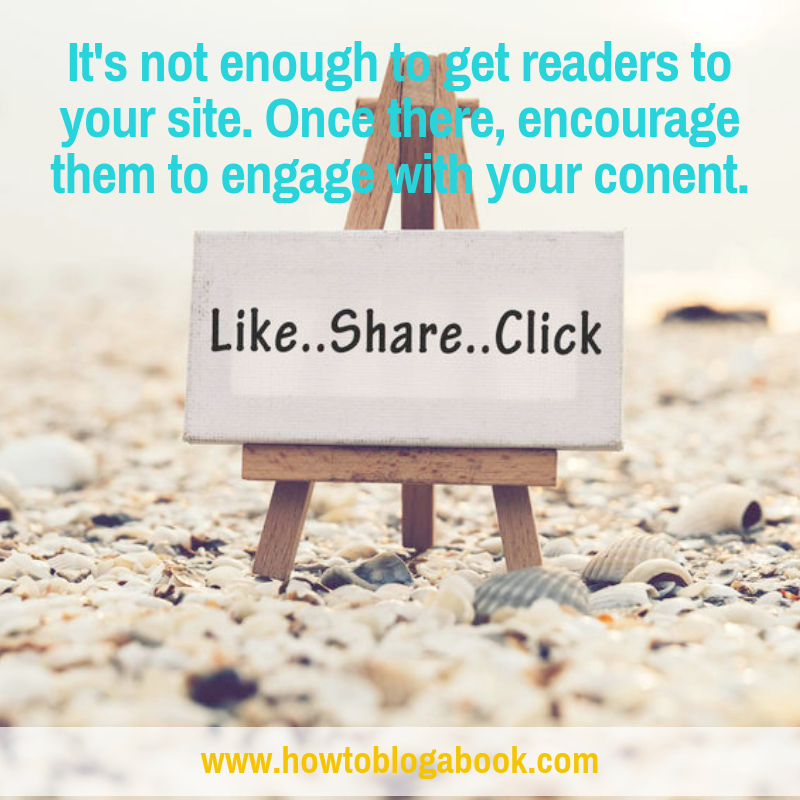It’s one thing to get readers to your site. It’s quite another to get them to engage with your content—to read it, share it, and comment on it. Today freelance writer Beth Bauer (@JourneyofBethB) provides several options for increasing reader engagement with your blog.
Are you wondering how to increase reader engagement with your posts? So are most bloggers. It’s getting harder and harder to encourage readers to stick around and read posts let alone do anything else, like click a link or comment on or share them.
I recently attended the Digital Marketing Summit in Portland, Oregon, where I had the opportunity to hear a variety of experts speak on this topic. Two bits of advice stood out to me: build great content, and put it smart places, which I wrote about in my last post, and sell less, engage more.
In this post, I want to offer some pointers on how to better engage your audience and build your following.
Vlogging
Vlogging may not be new, but this video blogging format continues to become exponentially more popular, and the trend shows no signs of slowing down anytime soon. It’s a curious phenomenon—people filming their daily lives and careers. It’s even more fascinating that millions of people watch these videos, especially since the quality of the film is generally amateurish.
People seem to enjoy the ability to watch video from the comfort of their home that shows them what life is like in another country, a different culture, or when participating in all kind of activities they may never experience. They like seeing thought leaders and experts in their day-to-day life and talking about their work.
It doesn’t matter why people watch video blogs. The point is that vlogging helps you connect with your audience in a more intimate way. It’s like speaking directly to your audience through the camera lens, and they respond to that with higher engagement.
Movement on Your Page
Consumers often spend less than four seconds on a website. That means you must grab a readers attention immediately and have some sort of action happing on your page to keep their attention.
This eye-catching movement of compelling action might be something as simple as a scrolling gallery of images, an animation of some sort, or an embedded video. Any type of movement increases the odds of keeping your audience engaged.
Voice Search Compatibility
Alexa is taking over the world. Everyone is talking about voice commands, and Alexa seems to be at the forefront of the conversation. According to comScore, 50% of all web searches will be done with voice by 2020. Currently, about 13% of all U.S. households own a smart speaker, and that number is forecast to rise to 55% by 2022.
Voice search command usually includes longer phrases than keywords. For example, when typing a search for weather in Los Angeles, you would probably type “weather in LA,” but a voice command would probably sound more like “What is the current weather in Los Angeles?” That means that along with using keywords in your blog, you also need to use key phrases, so people searching by voice will find you or your topic.
Customer Experience
It’s no longer enough to just get the attention of the consumer; you have to keep them engaged throughout the “customer experience.”
What is exactly is the customer experience? Customer experience involves many elements, but, in essence, it’s the perception the customer has of your specific brand. (When it comes to blogging, more times than not the brand is you—who you are and what you stand for.) Even if you believe your followers think of you in a certain way, if the customer (or reader) perceives you differently, that is their real customer experience.
Your customers are your blog readers, even if you aren’t selling them any type of product. Your branding efforts are meant to encourage readers to perceive you in a certain way. Sometimes, however, how customers perceive you is based solely on their experience of you. In the end, customer experience has a lot to do with perception.
Micro Markets
As blogging and vlogging grow more and more popular and gain readers, micro markets become critical. For example, a search for “travel blog” will bring up thousands of options, and getting your site to the top of the listing can be difficult. However, a search for “Travel blog for disabled millennials” would have a much more limited search response, making it more likely that your blog on travel for disabled millennials would rank higher in the search.
Narrowing your niche helps you rank higher in the search engine results pager and will help you engage more with your readers. After all, those interested in our specific topic are more likely to stick around and engage with your content. If they land on a blog that is generally about travel, for instance, they won’t stick around long. What they really want is posts on travel for disabled millennials. This type of content will keep them reading, commenting, and sharing.
Think about who reads your blog posts and what they have in common. Review your Google Analytics to help you come up with a niche that works well for you. Then niche your content down!
The blogosphere is always changing, and it’s vital to keep up with blogging trends. Set time aside every week to read about the industry, learn, and master new skills. If you don’t keep up with the changes, your competitors probably will. Eventually, you might get left behind, and your blog will lose readers. Don’t let that happen.
How do you keep your readers engaged? Tell me in a comment below. And if you found this post helpful, please share it!
About the Author
 Beth Bauer is a freelance writer, travel blogger, yoga instructor, and entrepreneur currently working on her third novel. She has traveled to over 20 countries in just the last two years and enjoys life as a digital nomad. She is originally from the Pacific Northwest of the U.S.A., and when she’s home lives on the Long Beach Peninsula with her dog, Ozzie.
Beth Bauer is a freelance writer, travel blogger, yoga instructor, and entrepreneur currently working on her third novel. She has traveled to over 20 countries in just the last two years and enjoys life as a digital nomad. She is originally from the Pacific Northwest of the U.S.A., and when she’s home lives on the Long Beach Peninsula with her dog, Ozzie.


Great suggestions Beth. From my experience, embedded video appears to help with search ranking too… but whether the ranking boost is a result of the increased reader engagement Google observes or simply because Google assumes an article with embedded video is likely to provide a more helpful answer to their question — it is a little circular I guess. While vlogging is not for me, on my book review site I’ve found embedded book trailers or author interviews can work well also.
The initial source of traffic, and thus audience mindset is key too, e.g. on my website I tend to get particularly high pageviews per visit from Pinterest (a channel made for visual browsing) on the weekends. So, I’ve given greater focus to that social media channel than others recently and ensured my website readers can browse our several hundred books by cover image.